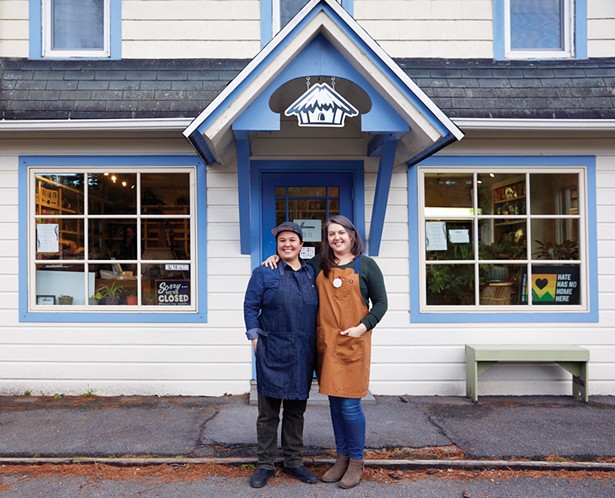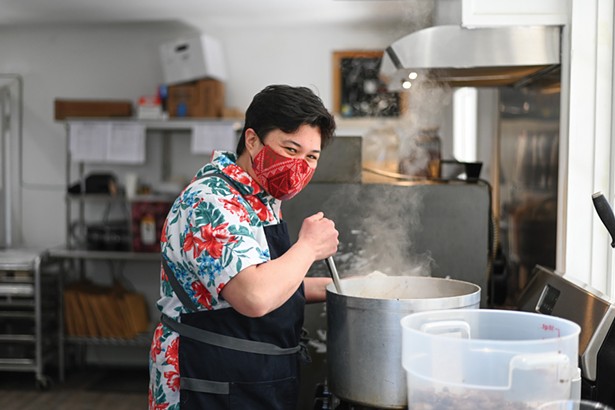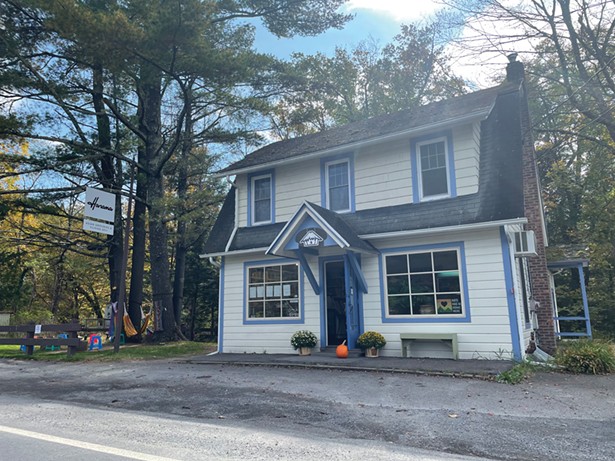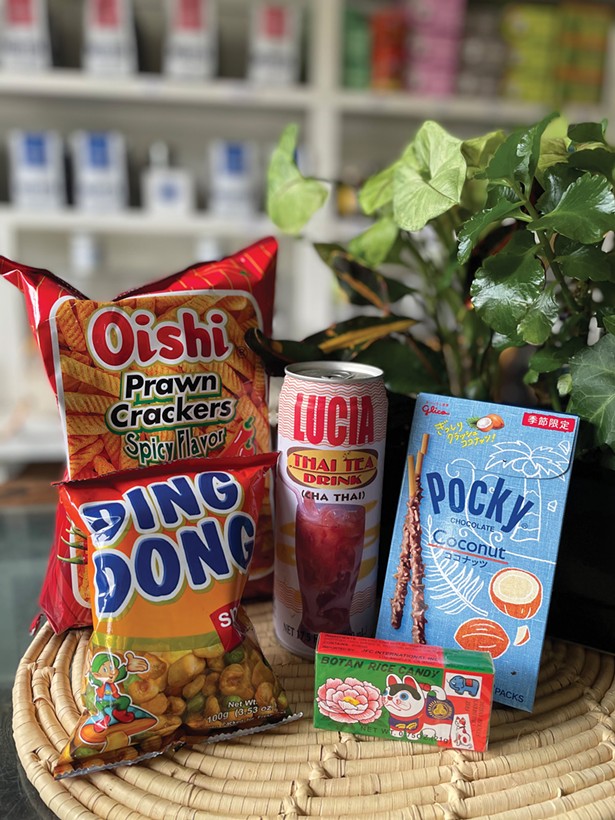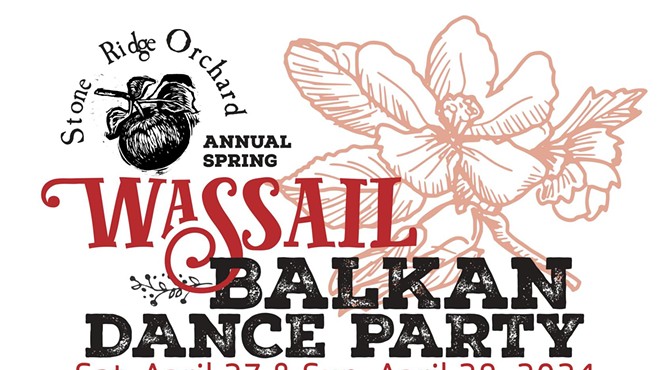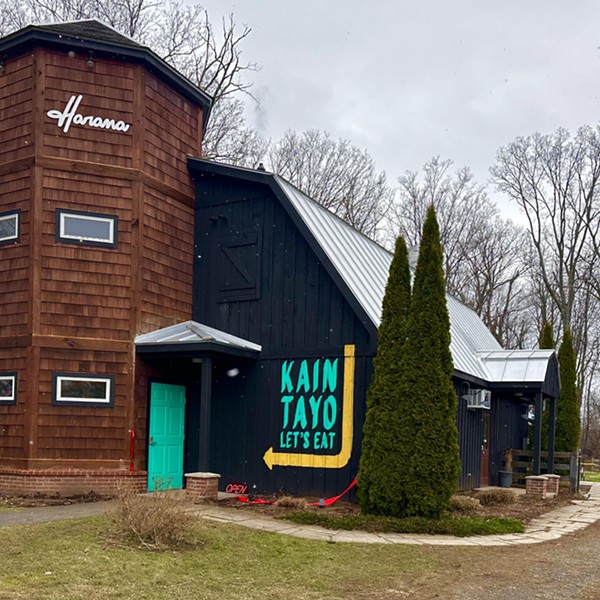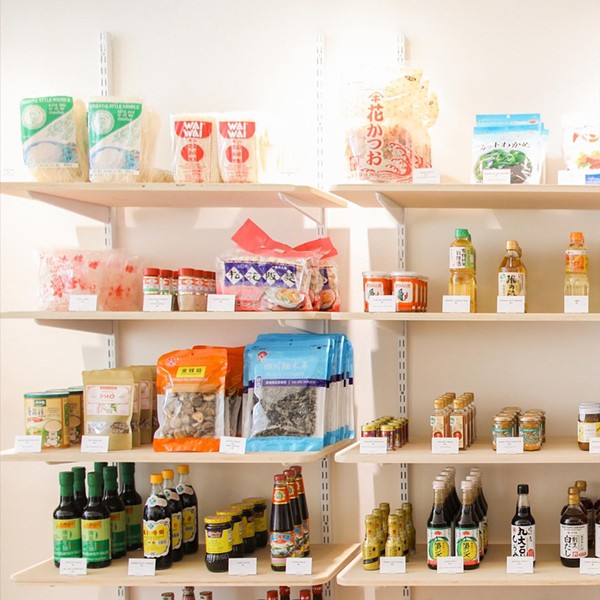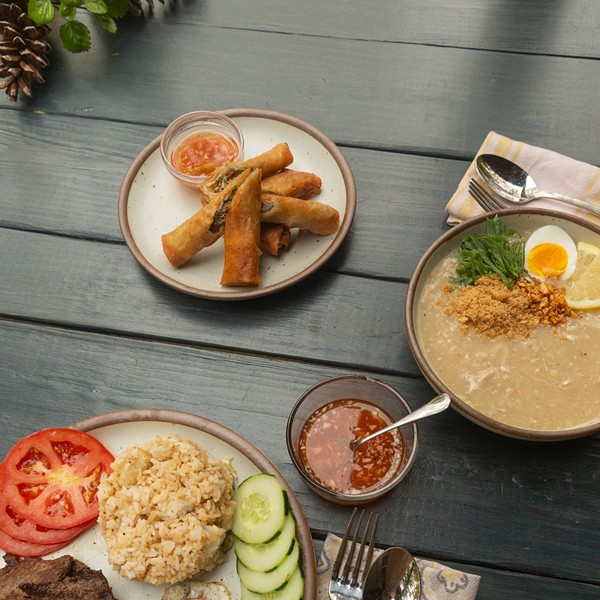Harana Market, however, doesn’t reap the village’s weekend foot traffic. The cafe’s out-of-the-way location between Mount Tremper and Bearsville almost guarantees a core clientele of hungry residents and au courant travelers. Fortunately, owners Eva Tringali and Christina Mauricio think that’s just fine, as their goal has always been to build community around their lutong bahay—homestyle Filipino food.
Filipino Foundations
Tringali grew up in the Hudson Valley, attending college in New Paltz. She left for California in 2011, where she would eventually meet Mauricio.Mauricio was in born San Diego. Raised by their Filipino grandparents, Mauricio spent their youth tugging on the hem of their grandmother’s dress in the kitchen sampling Tagalog cooking. “Mama” as they call her, grew up an hour north of Manila, where quintessential dishes like adobo were “as iconic to Filipinos as apple pie to Americans” says Mauricio. Mauricio discovered the flavors of their Ilocano heritage, this dominant ethnic group from the northern Philippines, through the vinegar-heavy fish and vegetable dishes of their grandfather.
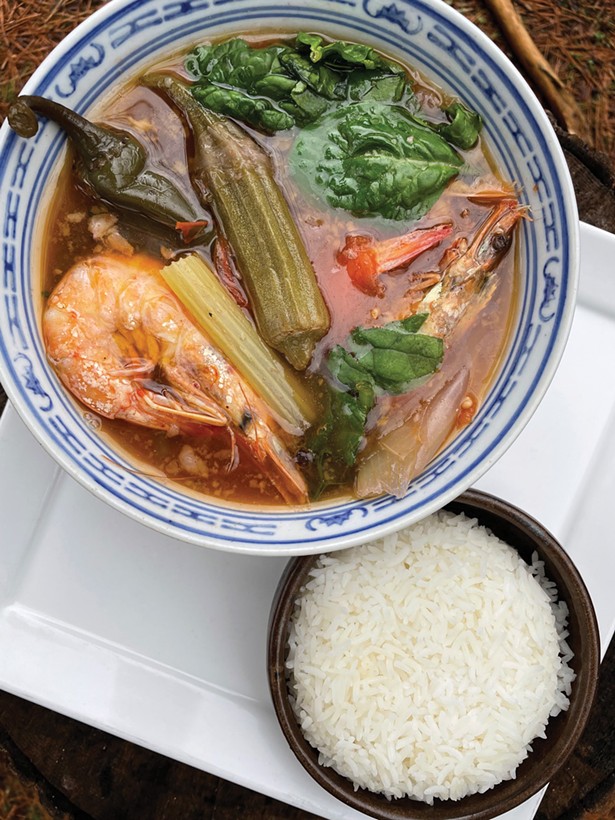
Mauricio and Tringali met in 2015, residing together in the Bay Area until returning to New York in the summer of 2019. They ultimately settled down in Phoenicia. “I think we ended up here, really, in a series of spontaneous decisions that felt a bit like luck, especially on the cusp of a global pandemic” says Tringali.
Though neither had experience running a kitchen—Tringali worked in event production and Mauricio in hotel kitchens—the couple felt driven to bring Filipino flavors and Pan-Asian provisions to the Catskills region.
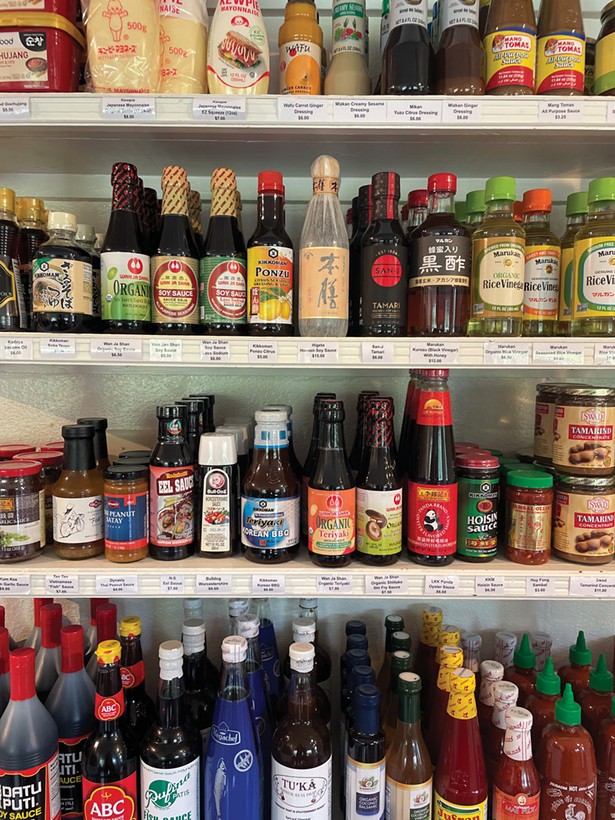
“Food has always been a connector for us,” says Mauricio. “I wanted to build a business for which I could effectively set a table for anyone who wanted to educate themselves on Filipino food.”
Most of the dishes at Harana Market are based on nostalgic memories from Mauricio’s upbringing. “What I love,” says Mauricio, “is that my grandmother would recognize the food if she was here to eat it.”
Building Community, One Tofu Sisig and Rainbow Flag at a Time
During the planning phase, Mauricio and Tringali envisioned a simple menu with one pot of rice, one meat dish, one vegetable dish, plus grocery items. They never expected to hire staff in their first year of operation, rather, they expected to handle the hours and rigor of small business proprietorship themselves. “We’ve obviously evolved significantly from that initial idea,” says Tringali. Both agreed that a measure of naivete worked in their favor. “This has been a lesson in not over-thinking, as it’s easy to talk yourself out of an idea,” says Tringali. “Especially because our customers have been so wonderful and loyal but are so well-traveled and knowledgeable. Had we known that, we might have had impostor syndrome and been, like, never mind.”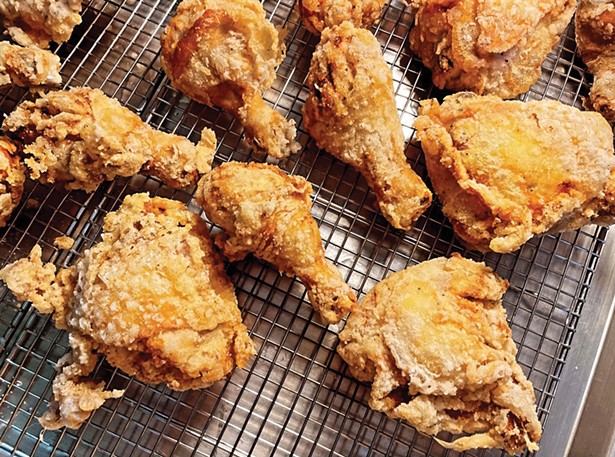
The duo has observed a whopping 50 to 75 percent customer retention rate on any given day. Additionally, they’ve welcomed eager diners who have traveled from as far as the Berkshires, the Hamptons, and even Washington, DC, to taste the food. “They’re not coming just because those areas lack Asian markets of Filipino restaurants. People are not coming out desperation,” says Tringali, holding back a tear of gratitude.
The queer couple, one of whom is non-binary and a person of color, has also made running an inclusive and ethical business a priority, even when decisions defy the wisdom of free market capitalism. “Now what we’ve hired people, their safety is our responsibility. We’ve learned that sometimes the choice we must make is the safer one, not the profitable one,” says Mauricio.
Such empathy extends to their out-and-proud willingness to be a point of visibility in the community. “Representation matters,” says Tringali. “We have intimate connections with many of our queer customers and we talk openly about our lives as queer people living in and navigating upstate New York,” she says.
Maurico retells how, last summer, someone left a Facebook comment accusing the pair of being “too visible.” In defiance, they raised the progress pride flag in their yard.
“We had customers come in to thank us for representing them or their children. And the best part of that Facebook comment was that many in our community came into the shop that week, some donning full rainbow garb, to tell us we are loved and needed here,” says Mauricio.
Lessons One Year into a Pandemic
From staff illnesses, implementing COVID safety protocols, to logistics and inflation, starting a business during a pandemic, let alone one that spotlights Asian cooking during a period of heightened xenophobia, hasn’t been easy. Mauricio and Tringali have learned hard lessons only softened by their ability to remain flexible and pivot. Aside from the threat of the Omicron variant, sourcing ingredients and the rising cost of goods present daily obstacles. Fan-favorite lumpia has been reduced to a once-weekly special, with quantity limits, because they can’t get the right wrappers for the crunchy spring rolls.As far as inflation, pantry items like white vinegar have shot up. “We only have one year of numbers to compare to, but prices have risen roughly 25 to 50 percent for some products. If we can’t get something, we don’t get hung up on it, we pivot.” says Tringali.
There are some dishes, however, they must keep on the menu to satisfy their fans. The sinangag ($4; garlic fried rice), tofu sisig ($12), and bok-silog ($13; silog is short for sinangag at itlog or garlic fried rice and egg), for example. And though the costs of beef and bok choy have ballooned, Tringali stresses the importance of supporting their partners in the Hudson Valley.
“The woman who grows our bok choy was worried about increasing her prices,” says Tringali. “We told her, ‘Don’t worry, we’ll just raise our price and let the customer decide if they buy it or not. You do what you need to do to support yourself.’” Tringali points out that they could source it for a few dollars less from Baldor, but they’d rather nurture local relationships.
To that end, their roster of regional vendors continues to grow. Currently, they buy produce from Good Chi Farm. The owner, Betsy Ho, is a second-generation Chinese-American who farms a half-acre in Kingston. The beef and pork come from Hudson Valley Cattle Company, and the chicken from Murray’s.
Tringali and Mauricio are excited about new opportunities to buy from small farmers through an aggregator, as well as the Asian-owned farms scattered around the valley like Asian Vegetable in High Falls. “It’s amazing what they can grow on an acre. They run a CSA, which you can pick up at Harana Market when the season starts. They offer hard-to-find, culturally relevant vegetables” says Tringali.
Tried, True, and New for 2022
Harana Market closed for a few weeks during the winter, reopening with a pared-down menu of warming soups and hearty stews.Tinolang Manok ($16), melds the citrusy and piquant notes of lemongrass and ginger with a bone-in chicken leg quarter. Simmered with chayote squash, onions, and garlic then topped with fresh spinach, the comfort dish, served over jasmine rice, suggests a zippy chicken soup with a touch of funk. That savory umami profile comes from a few dashes of Rufina-brand patis (fish sauce).
“Patis is one of the most essential condiments in any Filipino kitchen,” says Mauricio. “It’s used in foods and soups to give the dish a rounded saltiness. Rufina’s is based on mackerel, which results in a smoother patis than one based on anchovies, which is more astringent.”
Bagoong (fermented shrimp paste) is another prized Filipino ingredient. Mauricio serves bagoong as a condiment alongside kare kare ($18), a rich and savory beef shank peanut stew. “Producers ofbagoong leave tiny shrimp to bake in the sun, which triggers the fermentation process. When liquid is added, it becomes very fishy, salty, and shrimpy,” explains Mauricio.

Tringali and Mauricio don’t alter the food to suit the American palate. Tringali chuckles at the idea. “Emphatically, no. We don’t meet people where they are, at their comfort level, but rather ask them to be open and learn,” she says.
For the passionate eater, opportunities to discover abound at Harana Market. Atchara (pickled green papaya), another favorite condiment of Filipinos and Filipino-Americans, is served with pork barbecue skewers ($6) or with “any dish that’s salty and garlicky,” says Mauricio, “because the vinegar sharpness and touch of sweetness balance those flavors out.” Skewers also come with a side of sawsawan (spicy garlic vinegar), an all-purpose dip Filipinos use frequently, including with lumpia ($10).
The duo recently added a surefire win to the Friday night menu: fried chicken. The poultry gets an overnight bath in patis and citrus, before a coating of thin batter to give it a salty, crispy crust. The two- or six-piece buckets ($14/$35) come served over a bed of garlic popcorn with the option to add a drizzle of spicy honey. Harana’s Market’s fried chicken Friday may just set the new standard for Catskills comfort food, with a firmly Filipino perspective.







